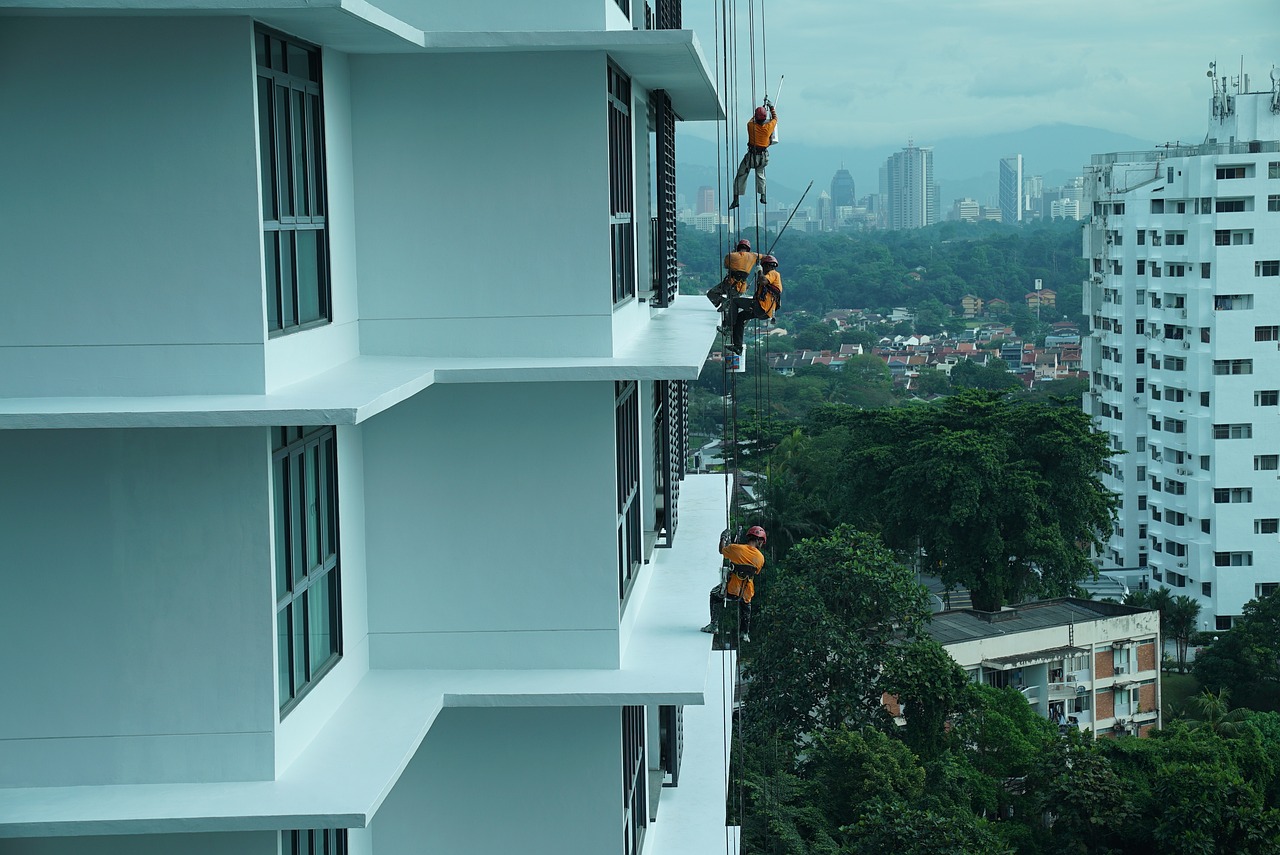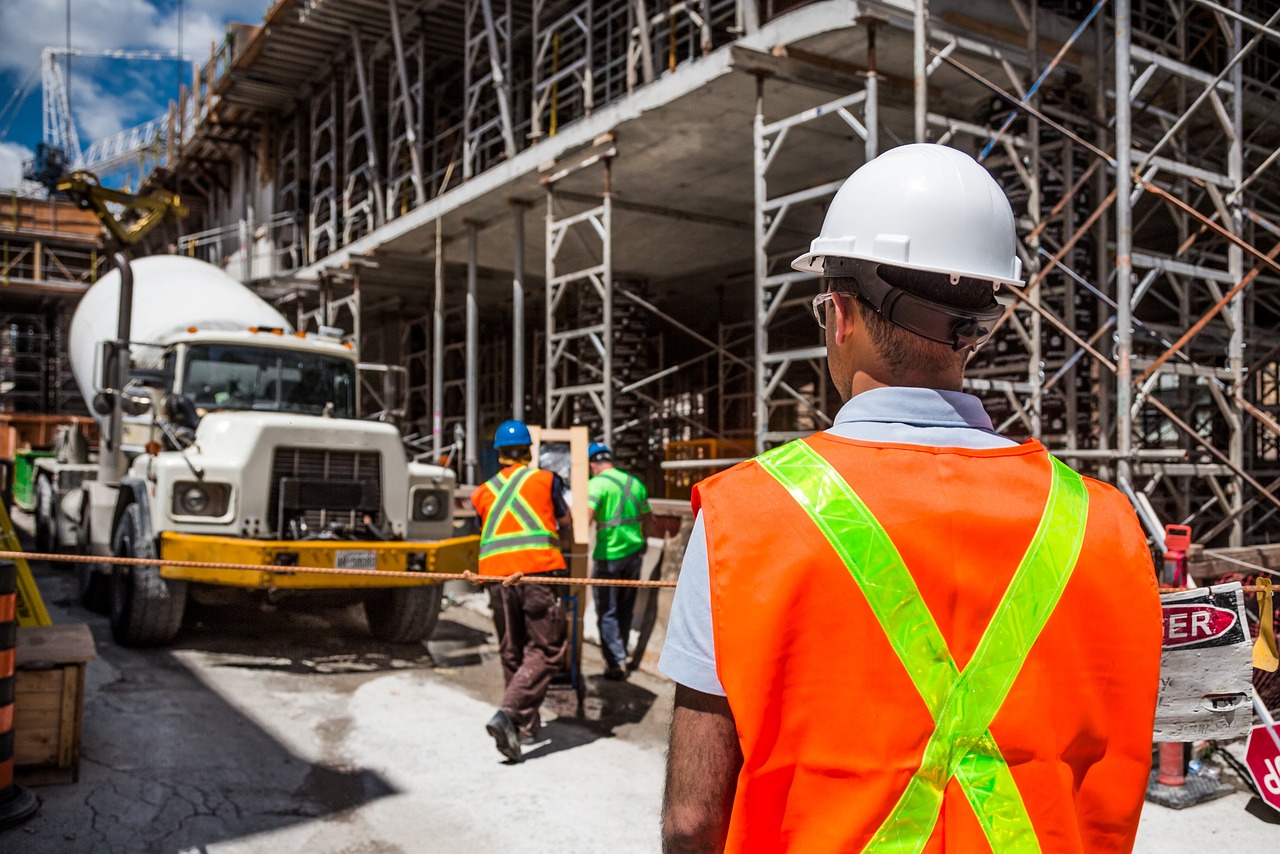Safety Measures - Do They Mirror Human Behavior?
When we think about safety measures, it’s easy to imagine strict protocols and rigid rules designed to protect us. But have you ever stopped to consider how these measures actually reflect our human behavior? The relationship between safety protocols and the way we act can be quite complex, influenced by a myriad of psychological and societal factors. In this article, we will dive deep into this fascinating connection, exploring how our innate tendencies and social environments shape our approach to safety. From the psychological underpinnings of compliance to the role of social dynamics, we will uncover the layers that make safety measures not just rules, but reflections of our very nature.
To start, let’s consider the psychology of safety. Have you ever wondered why some people religiously follow safety protocols while others seem to ignore them completely? This discrepancy can often be traced back to individual psychological factors such as perception of risk, personal experience, and even emotional responses. For instance, someone who has experienced a safety incident may have a heightened awareness of risks, leading them to adhere more strictly to safety measures. On the other hand, individuals who have never faced such situations may underestimate the importance of these protocols, believing they are unnecessary. This brings us to a critical point: our behavior around safety is not just about the rules themselves but about how we perceive and internalize them.
Moreover, the influence of social dynamics cannot be overlooked. Our behavior is often shaped by those around us. Consider the role of peer pressure—a powerful force that can either encourage compliance with safety measures or lead to reckless behavior. In a group setting, if the majority downplays the importance of safety, individuals may find themselves conforming to that attitude, ignoring protocols that could protect them. Conversely, in a culture that prioritizes safety, individuals are more likely to adopt those behaviors. This highlights how societal norms and peer behaviors can significantly impact our attitudes towards safety.
In crisis situations, the dynamics of group behavior become even more pronounced. People often look to others for cues on how to act, which can enhance or undermine safety protocols. For example, in a fire evacuation, if one person panics and runs in the wrong direction, others may follow suit, leading to chaos. Alternatively, if a leader remains calm and directs people to safety, it can create a more orderly and effective response. This phenomenon illustrates the profound impact of group behavior on individual actions, especially in critical moments.
Let’s not forget the role of social media in shaping our perceptions of safety. In today’s digital age, information spreads rapidly, and safety messages can be amplified or distorted. A viral post about a safety concern can lead to heightened awareness and compliance, while misinformation can breed skepticism and non-compliance. This duality of social media’s influence makes it a powerful tool in the realm of safety, capable of swaying public opinion and behavior in significant ways.
As we navigate the complexities of safety measures, it’s crucial to consider the balance between individual responsibility and collective accountability. While personal adherence to safety protocols is essential, fostering a community-wide culture of safety can enhance overall effectiveness. When individuals feel a sense of shared responsibility, they are more likely to engage in safe practices, creating a ripple effect that benefits everyone.
In conclusion, safety measures are not merely rules to follow; they are deeply intertwined with human behavior. Understanding the psychological and social factors that influence our adherence to these protocols can help us create a safer environment for all. By recognizing the importance of individual and collective responsibility, we can work towards a culture where safety is prioritized and ingrained in our daily lives.
- What are the main psychological factors influencing safety behavior?
Factors such as perception of risk, personal experiences, and emotional responses play a significant role in how individuals adhere to safety measures.
- How does peer pressure affect safety compliance?
Peer pressure can lead to increased compliance or reckless behavior, depending on the prevailing attitudes within a group.
- What role does social media play in safety measures?
Social media can amplify safety messages or spread misinformation, significantly impacting public perception and behavior regarding safety protocols.
- Why is collective responsibility important for safety?
Collective responsibility fosters a culture of safety, encouraging individuals to engage in safe practices that benefit the entire community.

The Psychology of Safety
This article explores the relationship between safety measures and human behavior, examining how psychological and societal factors influence the implementation and effectiveness of safety protocols in various environments.
Understanding the psychological factors that drive human behavior towards safety measures can reveal why certain protocols are followed while others are ignored in everyday life. At the core of this understanding lies the concept of risk perception. People often evaluate risks based on their beliefs and past experiences rather than on factual data. For instance, if someone has never experienced a fire, they might underestimate the importance of fire drills. This is where the cognitive biases come into play. These biases can lead to a false sense of security, causing individuals to overlook essential safety measures.
Moreover, emotions play a significant role in shaping our responses to safety protocols. When individuals feel fear or anxiety about a potential threat, they are more likely to adhere to safety measures. Conversely, if they feel overly confident or dismissive, compliance may drop. This emotional rollercoaster can be likened to a double-edged sword: while fear can motivate compliance, it can also lead to panic, resulting in chaos rather than order during emergencies.
Another interesting aspect is the concept of social proof. People often look to others when deciding how to act. If they see their peers engaging in safety practices, they are more likely to follow suit. This phenomenon can create a ripple effect, where one person's commitment to safety inspires another. However, the opposite is also true; if individuals observe others neglecting safety measures, they may feel justified in doing the same. This tendency highlights the importance of fostering a culture of safety within communities and organizations.
To illustrate these psychological dynamics, consider the following table that summarizes key psychological factors influencing safety behavior:
| Psychological Factor | Impact on Safety Behavior |
|---|---|
| Risk Perception | Influences how individuals assess the need for safety measures. |
| Cognitive Biases | Can lead to underestimating risks and ignoring safety protocols. |
| Emotional Response | Fear can enhance compliance, while overconfidence may reduce it. |
| Social Proof | Behavior of peers significantly impacts individual adherence to safety measures. |
In conclusion, the psychology of safety is a complex interplay of individual perceptions, emotions, and social influences. Recognizing these factors is crucial for developing effective safety protocols that resonate with people's behaviors. By addressing the psychological underpinnings of safety, we can create environments where safety measures are not just protocols to follow but integral parts of our daily lives.
- What is risk perception? Risk perception refers to how individuals evaluate the likelihood and severity of potential dangers, which can influence their adherence to safety measures.
- How do emotions affect safety behavior? Emotions such as fear or anxiety can motivate individuals to comply with safety protocols, while overconfidence may lead to negligence.
- What role does social proof play in safety compliance? Social proof suggests that people are likely to follow the safety behaviors of their peers, which can either promote or undermine safety practices.

Social Influences on Safety Practices
When we think about safety measures, it's easy to imagine rules and regulations set by authorities. However, the truth is that our social environment plays a massive role in how we perceive and adhere to these safety protocols. Have you ever noticed how people behave differently in groups compared to when they're alone? This phenomenon is particularly evident when it comes to safety practices. The dynamic interplay of social influences can either encourage compliance or breed negligence, often depending on the prevailing attitudes within a group.
One of the most significant factors at play is peer pressure. This isn't just something that happens in high school; it extends into adulthood as well. Imagine a workplace where everyone is skipping safety gear because "no one else is using it." Suddenly, that individual who might have been cautious feels compelled to follow suit. This can lead to a dangerous cycle where safety measures are ignored simply to fit in. Conversely, in environments where safety is prioritized and celebrated, individuals are more likely to adopt those same values and behaviors. It’s like a ripple effect—one person's commitment to safety can inspire others to do the same.
Moreover, cultural norms significantly shape our attitudes towards safety. In some cultures, there might be a strong emphasis on individualism, where personal freedom is prioritized over communal safety. In contrast, other cultures may foster a sense of collective responsibility, where everyone feels accountable for the well-being of the group. This cultural backdrop can dictate whether safety measures are seen as burdensome regulations or as essential practices that protect everyone involved. For example, in a community where safety drills are regularly practiced and respected, individuals are more likely to take them seriously and participate actively.
Social media also plays a pivotal role in shaping public perceptions of safety. A viral post can either promote awareness of a critical safety issue or spread misinformation that undermines established protocols. Consider how quickly safety campaigns can gain traction online, encouraging widespread compliance. On the flip side, misleading information can lead to confusion and non-compliance, as people may not know what to believe. The challenge lies in navigating this digital landscape and ensuring that accurate information reaches the public.
In summary, the are multifaceted and complex. From peer pressure to cultural norms and the impact of social media, these factors intertwine to shape how individuals and communities respond to safety measures. Recognizing this can help organizations and policymakers design better interventions that resonate with the social fabric of the communities they serve.
- How does peer pressure affect safety compliance? Peer pressure can either encourage individuals to follow safety protocols or lead them to ignore them, depending on the group's behavior.
- What role does culture play in safety practices? Cultural norms can dictate whether safety measures are seen as necessary or burdensome, influencing compliance rates.
- How does social media impact public perception of safety? Social media can amplify both accurate safety messages and misinformation, affecting how people perceive and react to safety measures.

Peer Pressure and Compliance
Peer pressure is a powerful force that can shape our behaviors in ways we often don't realize. It's like a double-edged sword; it can either encourage us to follow safety measures or lead us into reckless behavior. Imagine you're at a party where everyone is ignoring the safety guidelines. The music is pumping, and the atmosphere is electric, but you're standing there, contemplating whether to follow the crowd or stick to the rules. This scenario highlights the complex dynamics of peer influence. In many situations, individuals may feel compelled to conform to the group, prioritizing social acceptance over personal safety.
Research shows that when people see their peers engaging in safe behaviors, they are more likely to adopt similar practices. Conversely, if they witness risky actions being normalized, the likelihood of compliance with safety measures diminishes. This phenomenon can be particularly evident in environments such as schools, workplaces, and social gatherings. For instance, if a group of friends decides to wear helmets while biking, others in the group may feel encouraged to do the same. On the flip side, if no one is wearing a helmet, an individual may feel pressured to forgo it as well, fearing social exclusion.
To better understand this relationship, consider the following factors that influence compliance through peer pressure:
- Group Norms: The established behaviors within a group can dictate what is considered acceptable or unacceptable.
- Visibility of Actions: When safety measures are visible and celebrated within a group, individuals are more likely to adopt those behaviors.
- Fear of Judgment: The concern about being judged by peers can deter individuals from following safety protocols.
In essence, the impact of peer pressure on compliance with safety measures can be profound. It underscores the importance of fostering a culture where safe practices are the norm rather than the exception. Organizations and communities can leverage this understanding by promoting positive peer influences, creating campaigns that highlight safe behaviors, and using role models to set examples. By doing so, they can transform peer pressure from a potential risk factor into a powerful tool for enhancing safety compliance.
- What is peer pressure? Peer pressure is the influence exerted by a peer group, encouraging individuals to change their attitudes, values, or behaviors to conform to group norms.
- How does peer pressure affect safety compliance? Peer pressure can lead individuals to either comply with safety measures or engage in risky behaviors, depending on the group's attitudes towards safety.
- Can positive peer pressure be beneficial? Yes, positive peer pressure can encourage individuals to adopt safe behaviors, especially when those behaviors are visible and celebrated within a group.
- How can organizations promote safety through peer influence? Organizations can create campaigns that highlight safe behaviors, use role models to set examples, and foster a culture where safety is prioritized.

Group Behavior in Crisis Situations
When a crisis strikes, the behavior of individuals within a group can shift dramatically, often leading to outcomes that are unpredictable and sometimes counterproductive. In these high-stress situations, the psychology of the group can take over, causing people to act in ways that they might not typically consider. Imagine a ship in stormy waters; the crew must work together to navigate through the chaos, yet the fear and uncertainty can lead to panic instead of cooperation. This analogy illustrates how group dynamics can either enhance or undermine safety efforts during a crisis.
One of the most significant factors influencing group behavior in such situations is the phenomenon of social contagion. This is where emotions, attitudes, and behaviors can spread rapidly through a group, much like a virus. For instance, if one person begins to panic, it can quickly trigger a chain reaction, leading others to follow suit. Conversely, in a well-coordinated team, calmness can also be contagious, promoting a sense of stability and control. Understanding this duality is crucial for developing effective safety protocols that can guide behavior during emergencies.
Moreover, the leadership dynamics within a group play a pivotal role in determining how individuals respond in crises. Strong leaders can create an environment where safety measures are prioritized, fostering a culture of compliance and collective responsibility. On the other hand, a lack of clear direction can lead to confusion and chaos, further exacerbating the crisis. For example, during natural disasters, groups that have established clear communication channels and designated roles tend to fare better than those that do not.
To illustrate the impact of group behavior in crisis situations, consider the following table that outlines key factors influencing group dynamics during emergencies:
| Factor | Positive Influence | Negative Influence |
|---|---|---|
| Leadership | Provides direction and reassurance | Leads to confusion if absent |
| Communication | Facilitates coordination and trust | Creates panic if unclear |
| Group Cohesion | Encourages teamwork and mutual support | Can lead to herd mentality |
In addition to leadership and communication, the presence of social norms within a group can heavily influence individual actions. If the prevailing attitude is one of caution and adherence to safety protocols, individuals are more likely to follow suit. However, if the group norm leans towards recklessness, even the most safety-conscious individuals may feel pressured to conform. This highlights the importance of fostering a culture that values safety and encourages individuals to speak up against risky behaviors.
In summary, group behavior in crisis situations is a complex interplay of psychological and social factors. Understanding these dynamics is essential for developing effective safety measures that can guide individuals toward positive behaviors in times of uncertainty. By recognizing the potential for both positive and negative influences, leaders can better prepare their teams for the unexpected, ultimately enhancing overall safety and compliance during crises.
- What factors can influence group behavior during a crisis?
Group behavior can be influenced by leadership, communication, social norms, and the emotional state of individuals within the group.
- How can leaders promote safety during emergencies?
Leaders can promote safety by establishing clear communication, providing direction, and fostering a culture of compliance and collective responsibility.
- What role does social contagion play in crisis situations?
Social contagion can lead to the rapid spread of emotions and behaviors within a group, affecting how individuals respond to crises.

Social Media's Role
In today's digital age, social media has become a powerful tool that shapes public perception and influences behavior in various contexts, including safety measures. With platforms like Facebook, Twitter, and Instagram, information spreads rapidly, and individuals often find themselves inundated with both accurate safety messages and misleading information. This duality can create confusion, leading people to either embrace or dismiss safety protocols based on what they encounter online.
For instance, during a health crisis, social media can serve as a critical channel for disseminating vital information about safety practices, such as vaccination drives or hygiene protocols. When authoritative sources share clear and concise guidelines, they can foster a sense of community responsibility, encouraging individuals to comply with safety measures. However, the opposite can also occur. Misinformation can circulate just as quickly, often leading to public skepticism and non-compliance.
Consider the following impacts of social media on safety behavior:
- Amplification of Safety Messages: When influential figures or organizations share safety tips, their messages can reach a wide audience, motivating people to take action.
- Spread of Misinformation: False claims about safety measures can lead to widespread panic or apathy, undermining efforts to maintain public safety.
- Community Engagement: Social media platforms can facilitate discussions around safety, allowing individuals to share experiences and strategies for compliance.
Moreover, the visual nature of platforms like Instagram can play a pivotal role in shaping perceptions. Images and videos showcasing safe practices can serve as powerful reminders of the importance of adhering to safety measures. For example, a viral post demonstrating proper handwashing techniques can encourage viewers to adopt this behavior in their daily lives. Conversely, sensationalized content that downplays risks can lead to reckless behavior, as individuals may feel invincible in the face of danger.
Ultimately, the role of social media in safety behavior is a double-edged sword. It can be a force for good, promoting awareness and compliance, or it can perpetuate myths and misinformation that jeopardize public safety. As users of these platforms, it is crucial to critically evaluate the information we consume and share, ensuring that we contribute positively to the discourse surrounding safety measures.

Individual vs. Collective Responsibility
The interplay between individual responsibility and collective responsibility plays a pivotal role in how safety measures are perceived and enacted within communities. At the heart of this concept lies a fundamental question: how do we balance personal accountability with the shared obligations of a group? This dynamic often determines the effectiveness of safety protocols in various environments, from workplaces to public spaces.
On one hand, individual responsibility emphasizes the actions and decisions of each person. When individuals take ownership of their safety and that of others, it creates a culture of vigilance. For instance, if someone notices a hazard, their decision to report it can prevent accidents and promote a safer environment. However, this is often easier said than done. Many individuals may feel overwhelmed or unsure of their role, leading to inaction. This is where collective responsibility comes into play.
Collective responsibility, on the other hand, suggests that safety is a shared concern. It fosters a sense of community, where everyone looks out for one another. Think of it as a team effort, where the success of safety measures relies on the participation of all members. When a group collectively commits to safety protocols, the likelihood of adherence increases. For example, in a workplace setting, if employees regularly discuss safety practices, it not only reinforces the importance of these measures but also encourages individuals to take action.
However, the challenge lies in the balance. Too much emphasis on collective responsibility can lead to a diffusion of accountability. Individuals might think, "Someone else will take care of it," which can undermine the effectiveness of safety measures. This is especially true in large groups where personal contributions can feel insignificant. Conversely, a lack of collective support can leave individuals feeling isolated in their efforts to promote safety, potentially leading to frustration and disengagement.
To illustrate this balance, consider the following table that outlines the key differences between individual and collective responsibility:
| Aspect | Individual Responsibility | Collective Responsibility |
|---|---|---|
| Focus | Personal actions and decisions | Shared obligations and community involvement |
| Accountability | Self-accountability | Group accountability |
| Motivation | Personal belief in safety | Peer influence and cultural norms |
| Outcome | Individual compliance | Enhanced group adherence |
Ultimately, fostering a culture that values both individual and collective responsibilities is essential for effective safety practices. Encouraging individuals to take initiative while also promoting a community spirit can create a robust safety net. It’s about creating an environment where everyone feels empowered to act, knowing that their actions contribute to a larger goal. So, how can we cultivate this balance? By actively engaging in discussions about safety, sharing experiences, and supporting one another, we can build a safer world together.
- What is the difference between individual and collective responsibility? Individual responsibility focuses on personal actions, while collective responsibility emphasizes shared obligations within a community.
- How can we encourage individual accountability in safety practices? Encouraging open communication, providing training, and recognizing individual contributions can enhance accountability.
- Why is collective responsibility important for safety? Collective responsibility fosters a supportive environment where everyone looks out for one another, increasing adherence to safety measures.

The Impact of Environment on Safety Behavior
When we think about safety, we often picture rules, regulations, and protocols designed to keep us out of harm's way. But did you know that the environment around us plays a pivotal role in how we perceive and react to these safety measures? It’s almost like a stage where the actors—us—perform based on the set design. The physical space can either promote safe behaviors or inadvertently encourage risky actions. Imagine walking through a poorly lit parking lot versus a well-lit one; the latter instantly makes you feel safer, right? This is just one example of how environmental factors shape our safety behavior.
Several elements come into play when discussing the impact of environment on safety behavior:
- Design: The layout of a space can guide human behavior. For instance, open spaces with clear sightlines can deter risky behavior, while cluttered areas may invite accidents.
- Accessibility: If safety measures are difficult to access or understand, compliance will drop. Think about fire exits that are blocked or hard to find—people are less likely to use them in an emergency.
- Visibility: Well-marked signs and visible safety equipment can significantly enhance compliance. If a fire extinguisher is hidden behind a door, it’s not going to be very useful in a crisis.
Moreover, the environment can influence our emotional state, which in turn affects our behavior. A calm, well-organized environment fosters a sense of security, making individuals more likely to adhere to safety protocols. On the flip side, chaotic or stressful environments can lead to panic and poor decision-making. This psychological aspect is crucial; when we feel safe, we are more inclined to act in ways that promote safety, both for ourselves and those around us.
In addition, consider how cultural contexts can shape our interaction with our environment. In some cultures, communal spaces are designed to encourage social interaction, which can lead to collective safety practices. In contrast, environments that promote isolation may hinder the sharing of safety information and resources. This emphasizes the importance of designing spaces that not only ensure safety but also foster a sense of community and shared responsibility.
To illustrate the impact of environment on safety behavior, let’s take a look at a simple comparison:
| Environmental Factor | Impact on Safety Behavior |
|---|---|
| Lighting | Well-lit areas encourage safe navigation and deter crime. |
| Signage | Clear, visible signs promote awareness and compliance with safety measures. |
| Space Design | Open spaces reduce the likelihood of accidents and enhance emergency response. |
Ultimately, the relationship between environment and safety behavior is complex and multifaceted. By understanding how different factors influence our actions, we can create spaces that not only prioritize safety but also encourage positive behaviors. Whether it’s through thoughtful design, accessibility, or fostering community, the goal should always be to make safety a natural part of our environment, rather than an afterthought.
- How does the environment influence safety behaviors? The environment shapes our perceptions and reactions, making us more or less likely to adhere to safety measures based on design, accessibility, and emotional cues.
- What role does community play in safety? A supportive community can enhance safety practices by fostering shared responsibility and encouraging individuals to look out for one another.
- Can poor design lead to accidents? Yes, poorly designed spaces can create hazards that increase the likelihood of accidents and non-compliance with safety protocols.

Designing Safe Spaces
When it comes to creating safe spaces, the design of an environment plays a pivotal role in influencing human behavior. Think about it: the way a space is structured can either promote safety or inadvertently encourage risky behavior. For instance, well-lit areas with clear sightlines can deter criminal activity and foster a sense of security among users. In contrast, dark, cluttered spaces can lead to accidents or unsafe encounters. It’s almost like the environment is a silent guide, steering us towards safety or danger based on its layout.
One of the most effective strategies in designing safe spaces is the concept of Crime Prevention Through Environmental Design (CPTED). This approach focuses on the following key principles:
- Natural Surveillance: Increasing visibility in public areas by minimizing obstructions such as tall bushes or fences.
- Territorial Reinforcement: Using physical markers, like fences or signage, to define ownership and encourage users to take responsibility for their space.
- Access Control: Designing entry and exit points to limit access to unauthorized individuals, thus enhancing security.
Moreover, the incorporation of universal design principles ensures that safe spaces are accessible to everyone, regardless of their physical abilities. This means creating environments that invite participation from all community members. For example, wheelchair ramps, tactile paths for the visually impaired, and wide walkways can make a significant difference in how individuals navigate a space. When everyone feels welcome and safe, compliance with safety measures naturally increases.
Another critical aspect of designing safe spaces is the use of color psychology. Colors can evoke emotions and influence behavior. For instance, bright colors can energize and encourage activity, while softer hues can create a calming atmosphere. By strategically using colors in public spaces, designers can promote a sense of safety and well-being. Imagine walking into a park with vibrant greens and blues; it’s likely to uplift your mood and make you feel at ease.
Furthermore, incorporating nature into the design of spaces—also known as biophilic design—can enhance safety by providing a calming effect. Plants and natural elements not only beautify an area but also reduce stress and anxiety, making individuals feel more at home. This connection to nature can lead to improved mental health and a greater sense of community, which ultimately contributes to a safer environment.
In conclusion, designing safe spaces is not just about aesthetics; it’s about understanding human behavior and creating environments that foster safety and security. By considering factors such as visibility, accessibility, color, and the integration of nature, we can create spaces that not only protect but also promote positive interactions among individuals. After all, a well-designed environment can be the difference between a place where people feel anxious and one where they feel safe and secure.
Q1: What is CPTED?
A1: CPTED stands for Crime Prevention Through Environmental Design, a strategy that uses design principles to reduce crime and enhance safety in public spaces.
Q2: How does color affect safety in public spaces?
A2: Colors can influence emotions and behaviors; bright colors can energize and promote activity, while softer hues can create a calming atmosphere, contributing to a sense of safety.
Q3: What is biophilic design?
A3: Biophilic design incorporates natural elements into spaces to enhance well-being and reduce stress, promoting a sense of safety and community among individuals.

Accessibility and Safety Compliance
When we talk about accessibility in relation to safety compliance, it’s essential to recognize that safety measures must be designed with everyone in mind. Imagine a scenario where a fire alarm goes off in a building, but the exit doors are too heavy for some individuals to open. This is a classic case of how a lack of accessibility can lead to dire consequences. If safety measures are not easily accessible, compliance rates drop, and the risks of accidents and injuries increase significantly.
Accessibility isn’t just about physical barriers; it also encompasses communication and information dissemination. For instance, safety instructions should be available in multiple languages and formats, ensuring that everyone, regardless of their background or abilities, can understand what is expected of them during emergencies. This includes using clear signage, providing audio cues, and even offering visual aids for those who may need them.
To illustrate the importance of accessibility in safety compliance, consider the following factors that can impact how individuals respond to safety measures:
- Physical Accessibility: Are safety exits and equipment easily reachable for all individuals, including those with disabilities?
- Information Accessibility: Is safety information available in formats that cater to diverse audiences, including those with hearing or visual impairments?
- Training and Awareness: Are safety drills and training sessions designed to include everyone, ensuring that all individuals know how to respond in a crisis?
Creating an environment where safety measures are accessible requires a proactive approach. Organizations must conduct regular assessments to identify potential barriers and work towards eliminating them. This might involve redesigning spaces to ensure that exits are clearly marked and easily navigable or providing training sessions that cater to various learning styles.
Moreover, engaging with the community to understand their needs can lead to more effective safety protocols. By fostering an inclusive atmosphere, organizations can enhance compliance rates and ultimately contribute to a safer environment for everyone. It’s not just about having safety measures in place; it’s about ensuring that those measures work for all individuals, regardless of their circumstances.
In conclusion, the relationship between accessibility and safety compliance is critical. When safety measures are designed with accessibility in mind, not only do compliance rates improve, but the overall safety of the environment is enhanced. The goal should always be to create systems that protect everyone, demonstrating that safety is a shared responsibility that requires thoughtful consideration of all individuals.
- What is accessibility in safety compliance?
Accessibility in safety compliance refers to the ease with which all individuals, regardless of their physical abilities or understanding, can engage with and follow safety measures. - How can organizations improve accessibility?
Organizations can improve accessibility by conducting assessments, redesigning spaces, providing information in various formats, and ensuring that training sessions are inclusive. - Why is it important to consider accessibility in safety measures?
Considering accessibility is vital because it ensures that everyone can respond effectively in emergencies, which ultimately enhances overall safety. - What role does community engagement play in safety compliance?
Community engagement helps organizations understand the unique needs of individuals, allowing for the development of safety measures that are effective and inclusive.

Evaluating Effectiveness of Safety Measures
When it comes to safety measures, simply implementing protocols isn't enough; we must also evaluate their effectiveness. This evaluation process is crucial because it gives us insights into how well these measures are working in real-world situations. For instance, have you ever wondered why some safety protocols seem to work like a charm while others fall flat? The answer often lies in behavioral outcomes and adherence rates. By analyzing these two factors, organizations can identify areas that need improvement and adapt their strategies accordingly.
To truly understand the effectiveness of safety measures, we need to look at various data points. This is where data-driven approaches come into play. By leveraging data analytics, organizations can gather information on how individuals interact with safety protocols. For example, if a workplace implements a new safety training program, data can be collected on incident reports before and after the training. This will provide a clear picture of whether the training has led to a decrease in accidents or if further adjustments are necessary.
Moreover, it's essential to create feedback loops that facilitate continuous improvement. Imagine a scenario where safety measures are static and never reviewed. Over time, these measures may become outdated or irrelevant. By establishing feedback mechanisms, organizations can regularly assess the effectiveness of their safety protocols and make necessary adjustments. This proactive approach ensures that safety measures remain relevant and effective in response to changing human behaviors and environmental conditions.
| Evaluation Method | Description | Benefits |
|---|---|---|
| Incident Reporting Analysis | Reviewing accident and incident reports to identify trends. | Helps pinpoint areas needing improvement. |
| Surveys and Feedback | Gathering employee feedback on safety measures. | Encourages participation and identifies gaps in knowledge. |
| Training Effectiveness Assessment | Evaluating the impact of training sessions on safety behavior. | Ensures training is effective and relevant. |
In conclusion, evaluating the effectiveness of safety measures is not merely a checkbox activity; it is a vital process that requires ongoing attention and adaptation. By utilizing data-driven approaches and creating feedback loops, organizations can ensure that their safety measures are not only implemented but are also effective in promoting a culture of safety. So, next time you hear about a safety protocol, ask yourself: how do we know it’s working?
- What are some common methods for evaluating safety measures?
Common methods include incident reporting analysis, surveys, and training effectiveness assessments.
- Why is data analysis important in safety measures?
Data analysis helps identify trends and areas for improvement, ensuring that safety measures are effective and relevant.
- How often should safety measures be evaluated?
Safety measures should be evaluated regularly, ideally after any significant incident or at least annually.

Data-Driven Approaches
In today's world, where information is abundant and technology is advancing at lightning speed, the use of in safety measures is not just beneficial; it's essential. By leveraging data analytics, organizations can gain a clearer understanding of how safety protocols are functioning in real time, allowing them to make informed decisions that enhance compliance and effectiveness. Imagine trying to navigate a ship without a compass; that's what implementing safety measures without data feels like. With data, organizations can steer their safety efforts in the right direction.
Data-driven approaches involve collecting and analyzing various types of data related to safety practices. This can include incident reports, compliance rates, and even employee feedback. By examining these data points, organizations can identify trends, pinpoint areas of concern, and develop targeted interventions. For example, if data reveals that a particular safety measure is frequently ignored in a specific department, management can investigate the underlying reasons and adjust their strategies accordingly.
To illustrate the impact of data-driven approaches, consider the following table that outlines some key benefits:
| Benefit | Description |
|---|---|
| Enhanced Understanding | Data provides insights into how safety measures are perceived and followed, allowing for a more nuanced understanding of compliance issues. |
| Targeted Interventions | Organizations can develop specific strategies based on data analysis, addressing the unique challenges faced by different teams or departments. |
| Continuous Improvement | By regularly reviewing data, organizations can adapt and refine their safety protocols, ensuring they remain effective in changing environments. |
| Increased Accountability | Data can help hold individuals and teams accountable for safety practices, fostering a culture of responsibility and vigilance. |
Moreover, the incorporation of feedback loops is vital in this process. By creating systems where employees can report their experiences and suggest improvements, organizations can gather qualitative data that complements quantitative findings. This holistic view of safety practices not only enhances compliance but also boosts morale, as employees feel their voices are valued in the safety conversation.
In summary, adopting a data-driven approach to safety measures is like having a detailed map in a vast wilderness. It empowers organizations to navigate the complexities of human behavior and environmental factors, leading to more effective safety protocols. Ultimately, this approach not only protects individuals but also fosters a culture of safety that can ripple through entire communities.
- What are data-driven approaches? Data-driven approaches involve using data analytics to inform decisions and strategies, particularly in enhancing safety measures.
- How can data improve safety measures? By analyzing data, organizations can identify trends, understand compliance issues, and develop targeted interventions to improve safety protocols.
- What role does employee feedback play? Employee feedback provides qualitative data that complements quantitative findings, helping organizations to create a more comprehensive understanding of safety practices.
- Why is continuous improvement important? Continuous improvement ensures that safety measures remain relevant and effective in response to changing behaviors and environmental conditions.

Feedback Loops and Adaptation
The concept of feedback loops is essential in understanding how safety measures can evolve and improve over time. Just like a well-tuned machine, safety protocols require constant adjustments based on the feedback they receive from their users. Imagine driving a car; the more you drive, the better you understand how to navigate different terrains and conditions. Similarly, feedback loops in safety measures allow organizations to learn from past experiences, adapting their strategies to ensure greater effectiveness.
Feedback loops operate on a simple yet powerful principle: observe, analyze, adapt. By collecting data on how individuals interact with safety measures, organizations can identify patterns and trends that inform future actions. For instance, if a particular safety protocol is frequently bypassed or misunderstood, it’s crucial to investigate why this is happening. Are the instructions unclear? Is the measure too cumbersome? By asking these questions, organizations can make informed decisions to enhance compliance.
Moreover, the role of technology in creating effective feedback loops cannot be overstated. With the advent of data analytics and real-time monitoring systems, organizations can gather extensive data on safety practices. This information can be visualized in tables or charts, making it easier to spot trends and anomalies. For example, consider the following table that illustrates how feedback data can be structured:
| Safety Measure | Compliance Rate (%) | Feedback Received | Action Taken |
|---|---|---|---|
| Fire Drill Procedures | 75 | Confusion about evacuation routes | Updated signage and conducted additional training |
| Workplace Safety Gear | 60 | Lack of availability | Increased stock and improved distribution |
This table not only highlights compliance rates but also showcases how feedback leads to tangible actions. When organizations take the time to analyze feedback, they can make necessary adjustments that resonate with the needs of their employees or community members. It’s like a dance; when one partner adjusts their steps based on the other's movements, the entire performance becomes more fluid and synchronized.
Furthermore, creating a culture of feedback within an organization encourages individuals to voice their concerns and suggestions. This participatory approach not only enhances safety compliance but also fosters a sense of ownership among employees. When people feel that their opinions matter, they are more likely to engage with safety protocols actively. It’s this collective effort that transforms safety measures from mere policies into a shared commitment.
In conclusion, feedback loops and adaptation are vital in ensuring that safety measures remain effective and relevant. By embracing a cycle of observation, analysis, and adaptation, organizations can not only improve compliance rates but also cultivate a proactive safety culture. After all, in the ever-evolving landscape of safety, it’s the ability to adapt that ultimately keeps us safe.
- What are feedback loops in safety measures? Feedback loops refer to the process of collecting data on safety practices, analyzing it, and making adjustments to improve effectiveness.
- How can technology enhance feedback loops? Technology can provide real-time data analytics and monitoring systems, allowing organizations to gather and visualize feedback efficiently.
- Why is employee feedback important for safety measures? Employee feedback fosters a culture of safety and encourages individuals to engage actively with safety protocols, leading to better compliance.
Frequently Asked Questions
- What are safety measures and why are they important?
Safety measures are protocols or guidelines designed to protect individuals from harm in various environments. They are crucial because they help prevent accidents, reduce risks, and promote a culture of safety, ensuring that everyone can navigate their surroundings without unnecessary fear of injury.
- How does psychology influence adherence to safety measures?
Psychological factors, such as perception of risk and personal responsibility, significantly impact whether people follow safety protocols. For instance, if individuals believe that a safety measure is effective, they are more likely to comply. Conversely, if they perceive the risk as low, they might ignore these measures altogether.
- What role does social influence play in safety practices?
Social dynamics, including peer pressure and cultural norms, heavily influence individual attitudes toward safety. When individuals see their peers adhering to safety protocols, they are more likely to follow suit. However, if the group disregards safety, it can lead to a collective neglect of important measures.
- Can social media impact public safety behaviors?
Absolutely! Social media can amplify both positive safety messages and harmful misinformation. When accurate safety information is shared widely, it can enhance public compliance. On the flip side, misleading information can lead to confusion and risky behaviors.
- What is the difference between individual and collective responsibility in safety?
Individual responsibility refers to a person's obligation to follow safety measures, while collective responsibility emphasizes the shared duty of a community to create a safe environment. Balancing these two aspects is essential for effective safety practices, as both personal and group actions contribute to overall safety.
- How does the physical environment affect safety behavior?
The design and layout of a physical space can significantly influence safety behavior. For example, well-lit areas and clear signage can encourage compliance with safety measures, whereas poorly designed spaces may create hazards and discourage safe practices.
- What are some examples of designing safe spaces?
Designing safe spaces can include features like wide walkways, adequate lighting, and visible emergency exits. These elements encourage positive behaviors, such as using designated walkways and being aware of surroundings, ultimately reducing the likelihood of accidents.
- How can organizations evaluate the effectiveness of safety measures?
Organizations can assess the effectiveness of safety measures by analyzing adherence rates, incident reports, and behavioral outcomes. This data-driven approach helps identify areas for improvement and allows for tailored interventions based on observed behaviors.
- What are feedback loops in the context of safety measures?
Feedback loops are processes that allow organizations to gather information on the effectiveness of safety measures and make necessary adjustments. By continuously monitoring and adapting safety protocols, organizations can ensure that they remain relevant and effective in response to changing behaviors and environments.



















